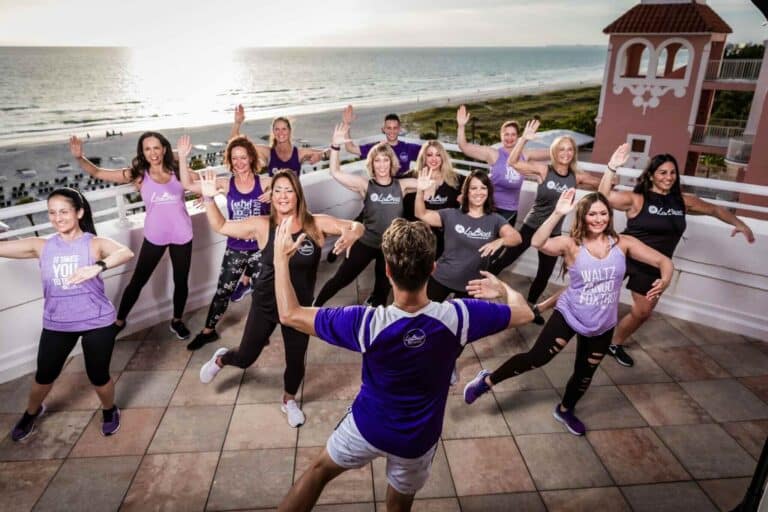One of the biggest challenges today facing companies (and particularly their HR Departments) is how attract and retain their top talent. With unemployment at a 49-year high, top talent is scarcer than ever.
The solution for more and more businesses is creating a vibrant and inclusive company culture that talent would be reluctant to leave, and inspires others to join.
People that like working with each other, like doing social activities together or group fitness activities, forge close bonds and are more productive and loyal than disengaged employees.
What can team building activity do for your company?
If done properly, a team building activity can be the catalyst that takes your talent retention and recruitment (and ultimately your business productivity) to the next level.
Here are a couple of guidelines for your next event:
- Don’t force the corporate stuff: Powerpoints explaining teamwork usually won’t improve teamwork. In fact most managers get caught up with too many unproductive meetings that ends up killing their productivity.
- Ditch the cliches: Being lame isn’t how you’ll boost moral.
- Don’t be cheap: Investing in your employees will always improve your bottom line.
- Keep that positive energy going at the office: Blur the line between ‘work’ and regular life. Try to create a symbiotic relationship.
- Keep it consistent: Nothing’s worse than looking like you used to care, or used to have fun events, and now that time has passed and your company is past its peak.
- Bonus points of you involve family: Few companies do this, but involving family members creates more goodwill – and more ambassadors for your company in the community.
By following these ground rules you can be sure to build lasting relationships between employees, improve moral, and increase the energy level at the office.
Most importantly, make sure your event fits with what your employees like and want. If most of your employees like dance, don’t insist on cardio because that’s your favorite. Listen to your team. Focus on fun.
Happy Employees Lead to More Productivity
A recent study by economists at the University of Warwick found that happiness led to a 12% spike in productivity, while unhappy workers proved 10% less productive. As the research team put it, “We find that human happiness has large and positive causal effects on productivity. Positive emotions appear to invigorate human beings.”
Sales is one of the careers with the highest burnout rate. Do you know why? It’s mainly because employees in this space are tired of doing the same monotonous tasks, in a stressful environment, on a daily basis.
Having a strong sense of mission – where the sales team understands how the product they’re selling is helping people – is certainly one way to change that. But if your business is more mundane, one of the best way to counter this sort of stress is to have good perks in place for your employees to relax after work.
What’s even better is a social perk like a fitness program that they can attend with their co-workers. That way they can relax, enjoy some social time, and get the workout that they need.
Next day, they’re back at it filled with productivity.
A recent Gallup survey found only 13% of employees are engaged at work, meaning the vast majority of working adults don’t enjoy their work. By one recent measure, this costs US companies roughly $450–$550 billion annually. Looked at another way; poor worker engagement can be seen an opportunity for companies to boost their productivity by investing in employees’ welfare and workplace happiness.
How Success Academy Scaled Their Engagement And Wellness Programs
Interested in seeing a case study and the result of a good corporate wellness program? The first Success Academy was launched in Harlem in 2006 with 165 young scholars, consisting of kindergarten and first graders, with a goal of education.
Educating children, especially children from economically disadvantaged neighborhoods, is challenging, and the school day is long and full. The demanding schedule made it hard for staff members to find time for their own wellness, in addition to taking the time to connect and engage with each other.
Tiffany Duncan, the Associate Director of Employee Benefits at Success Academy, decided to take a different approach in her new “Success for Life” wellness initiative – a 30-day Step Challenge for everyone in their organization. The challenge was to walk 10,000 steps every day for 30 days. Every person who participated was given a Fitbit to track their daily steps. Those who achieved the 30-day goal got $75 and were recognized school-wide. To encourage broader participation, those who achieved 10,000 steps for at least 15 days got a $25 reward, plus the all-important recognition of success.
The results? The Success for Life program was wildly successful, with almost 50% percent of the network organization having participated in the challenge! The program reaped significant benefits for individual participants, the Benefits team, and the organization as a whole.
This is a perfect example of how employee wellness programs can make a huge change.
Now this is really important: Studies show that financial incentives like the above are great for initiating behavior change, but – and this is a big but – they don’t sustain it. The key to initiating and sustaining social support is social support – real or virtual.
Burnalong’s data shows this – companies that play together don’t just get a pop in engagement, they get a sustained change in engagement. And for HR, that’s a company whose employees want to stay, and great ammunition for recruiting top talent.
Company Culture and Perks are Quite Important
Companies like Netflix have recently made headlines by providing employees with increased parental leave, and other employers provide appealing perks like unlimited vacation, free lunches and more.
According to Glassdoor’s Q3 2015 Employment Confidence Survey:
Specifically, more women (82%) than men (76%) prefer benefits or perks to a pay raise. And, younger employees aged 18-34 (89%) and 35-44 (84%) prefer benefits or perks to pay raises when compared to those aged 45-54 (70%) and 55-64 (66%).
As you can tell, money doesn’t mean everything. Instead employees favor a strong work culture.
When employees feel that the company takes their interest to heart, the employees will take company interests to heart. Nowadays, employee retention is tough. That is why it is important to invest in employee perks and company culture.
Here are a few of my favorite ideas to get you started:
- Have a themed party: St. Patrick’s day, Christmas, any holiday works. Even create your own (maybe!). Don’t worry about the the specific holiday, focus on the venue. Go all out and book someplace most employees wouldn’t normally hang-out. Don’t forget to get a DJ, play a trivia game, or do something else to get the mingling going.
- Create a company sports league: bowling, soccer, football, pool, paintball. Don’t be constrained to typical sports, pick something that anyone on your team would enjoy. Sports leagues are a great place to let off some competitive steam and showcase talents.
- Start a scavenger hunt in a national park: Getting outside into the woods is a sure way to get people smiling and adding a competitive element will keep things exciting.
- Do something less physically intensive, but still engaging and enjoyable: Host a cooking or a painting class, where the team can have a glass of wine and relax while learning something different.
- Involve the family. Create goodwill and joy across the board. They’ll encourage your employee to stay with you longer, and they’ll help spread the message how great your brand is.
- Have a corporate fitness program: A good program to look into would be Burnalong. Burnalong helps employers build vibrant and inclusive cultures — creating happier and healthier workforces. (And, it involves the entire family!)
The list keeps going and going, the only real limit is your imagination. If you have a hard time figuring out what to do, there is always someone in the office who can help. Remember, keep the events regular and consistent. Once a quarter is a great pace, while even once or twice a year can make a considerable difference if executed properly.






